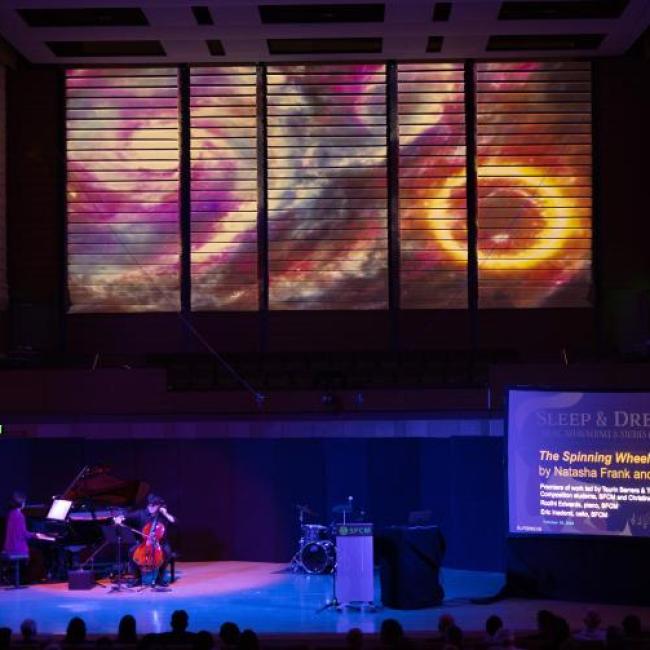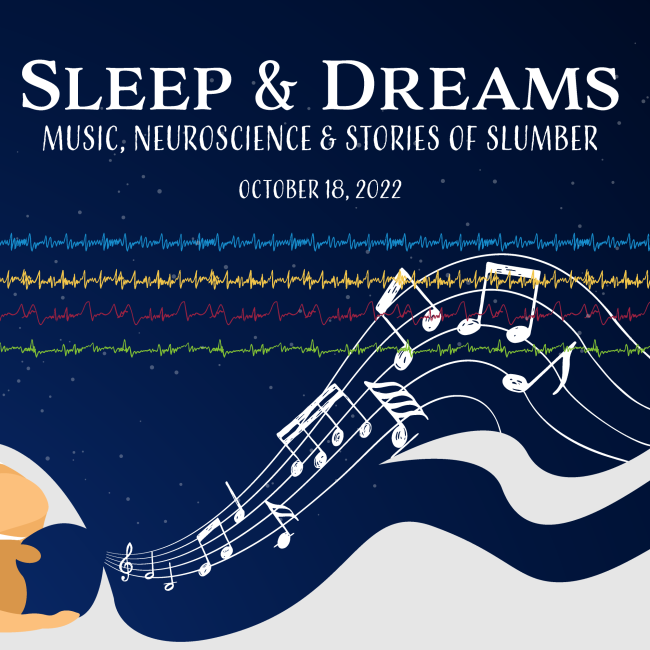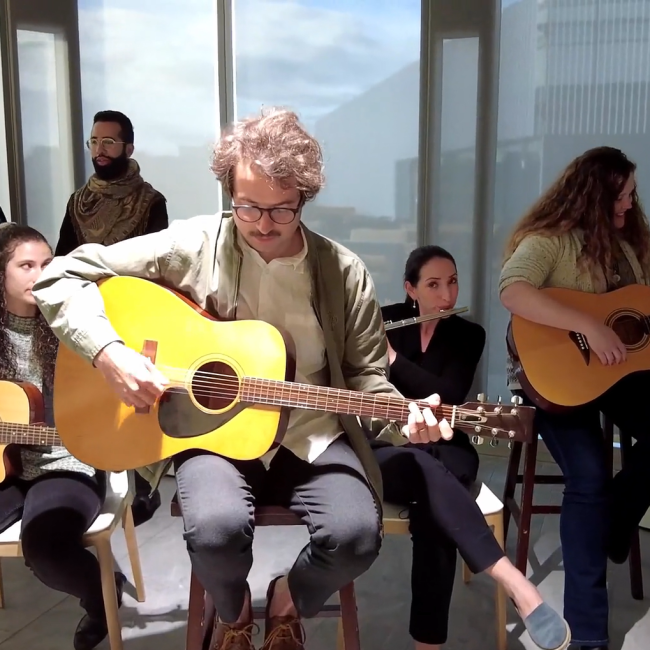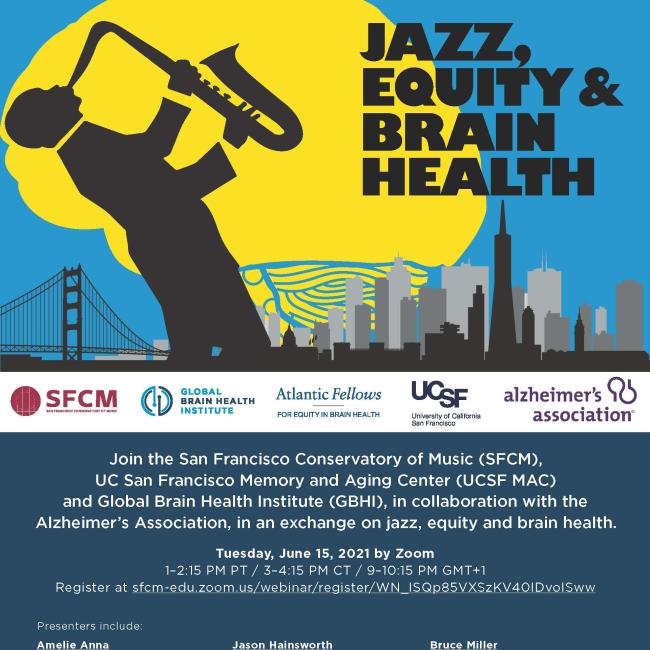Connecting Music, Creativity and the Brain in "The Last Dance"
On November 18, the Global Brain Health Institute (GBHI), UC San Francisco Memory and Aging Center, and San Francisco Conservatory of Music (SFCM), along with UCSF School of Medicine, co-hosted “The Last Dance,” a virtual event exploring music, creativity and neuroscience. The live event featured talks and improvised music and dance performances.
A Resilient Brain
The event was inspired, in part, by a recent connection of Kaitlin Casaletto, PhD, Assistant Professor of Neurology at the UCSF Memory and Aging Center; and Kimberly Cole, pop singer and songwriter.
Several years ago, Cole’s father developed frontotemporal dementia (FTD), a neurodegenerative disease that can result in challenges in social behavior, personality, emotion and problem-solving. Despite the devastating effects of the disease, Cole found that her relationship with her father was strengthened by a shared love of music.
“My songs became his soundtrack,” said Cole. “My melodies were his medicine.”
As a neuropsychologist, Casaletto studies resilience in brain aging and neurodegenerative diseases, including FTD. Early this year, she published research indicating that a physically and mentally active lifestyle may build resilience to FTD, even in people with high genetic risk.
Exercise and cognitive fitness are known to be among the best ways to prevent or slow Alzheimer’s disease—a more common but different type of dementia. However, Casaletto’s study extends this work to show that the same types of behaviors can benefit people with FTD, which is caused by a different form of brain degeneration. These findings may have implications for healthy brain aging.
“Cognitive decline is not inevitable,” said Casaletto.
After living with FTD for several years, Cole’s father, a lifelong musician, died in 2019. Soon after, Cole came upon Casaletto’s article about new research that indicates a connection between an active lifestyle and resilience to FTD.
The findings resonated with Cole, who witnessed her father come alive through musical activity in his final years. She was inspired to connect with the study’s lead author, Casaletto, to learn more, so she cold called her.
“I didn’t know what to expect,” said Cole. “But she picked up.”
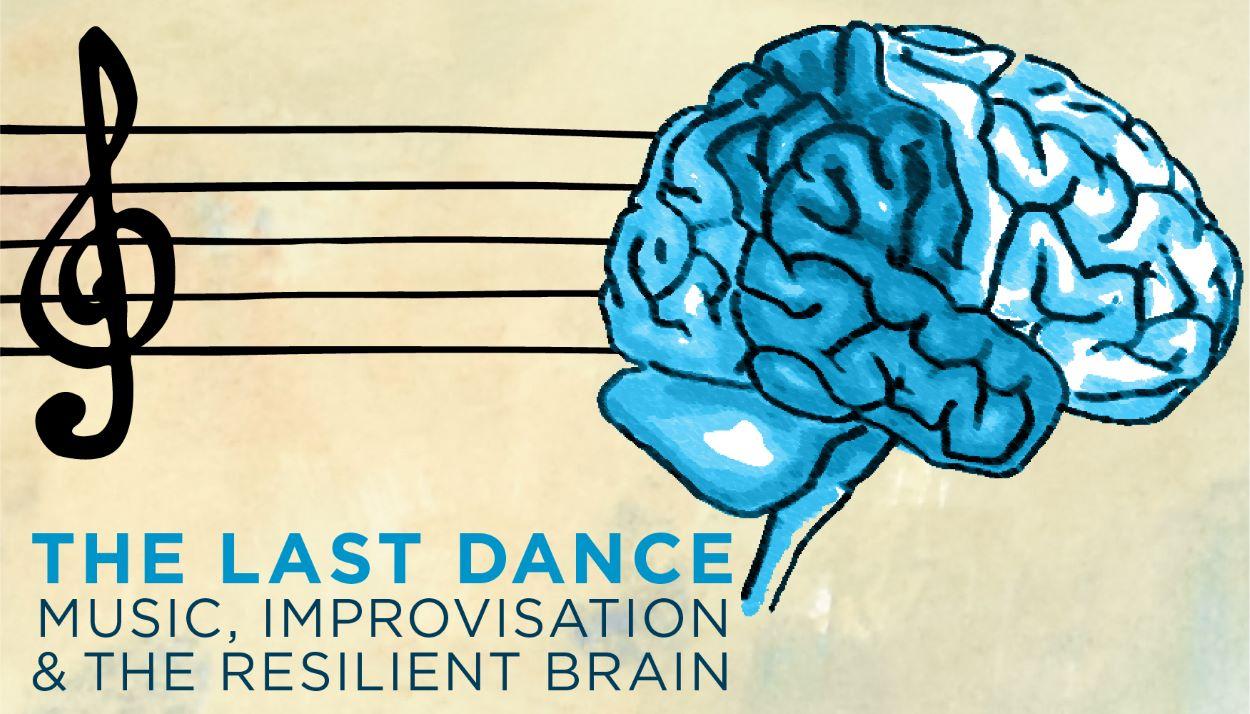
New Connections
The scientist and the pop singer hit it off. Soon Casaletto connected Cole with GBHI, UCSF Memory and Aging Center, and SFCM to develop “The Last Dance,” a collaborative event named after one of Cole’s songs. It is the third in a series that explores music, science and the brain. Originally conceived to take place in a concert hall, it was adapted to a virtual format due to the COVID-19 pandemic.
Over 400 guests from around the world joined ‘The Last Dance’ to consider ideas of how creative activities—such as musical improvisation, exercise, and sleep—are processed in the brain and can be used to build resilience.
Throughout the event, several musicians and a dancer—Magda Kaczmarska, MFA, an Atlantic Fellow for Equity in Brain Health at GBHI—considered the song, “The Last Dance,” and reimagined it through improvisation. Between musical performances, scientists offered explanations for the process, emphasizing that neurons are constantly changing based on our willingness to tackle new experiences.
“Experiences drive new connections in the brain,” said Casaletto.
In addition to physical and cognitive activity, sleep actively shapes our brain, said Neus Falgàs, MD, PhD, an Atlantic Fellow for Equity in Brain Health. “During sleep, the (neural) connections are strengthened so we can access them easier and make them long lasting.”
Research suggests that 40 percent of dementia cases are attributable to modifiable risk factors, like education, physical activity and sleep. A reduction of just 10 percent of these risk factors could result in 8.8 million prevented dementia cases by 2050, noted Casaletto.
“This is a profound comment on social determinants of health,” said Bruce Miller, MD, co-director of GBHI and director of the UCSF Memory and Aging Center. “We can never allow for one human being in our world to lose that creative potential because of their social circumstances.”
GBHI, the UCSF Memory and Aging Center, and SFCM aim to continue to develop this series of events focused on music, science and the brain.
“This interaction is so critical,” said David Stull, president of SFCM. “Creativity causes science to leap forward, and as science leaps forward, creativity leaps forward. We need each other in this process.”
Lee Jones, MD, Associate Dean of Students at UCSF School of Medicine, added, “We believe with our social climate and ongoing pandemic challenges that the importance and intersection of science and our humanity manifested both in music and in dance now are of the utmost importance.”
The Last Dance also featured talks, performances and collaboration by Charles Limb, MD; Jonathan Schor, PhD; and Enrique Vargas (UCSF); Camellia Latta, MLA; and Victor Valcour, MD, PhD (UCSF/GBHI); Kristopher Grant; Samuel C. Nedel; Mia Pixley, PhD; Jonas Wright (SFCM); and Jean-Yves Ducornet; Jacob Mendel; Molly Miller, PhD; and Sammy Miller, MM.
A video of the event is available here.
Authors
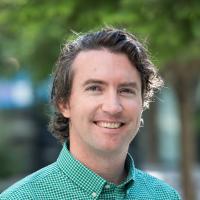
Niall Kavanagh
Communications Officer
GBHI Members Mentioned
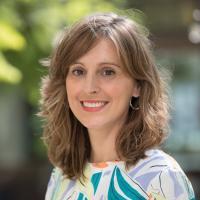
Neus Falgàs, MD, PhD
Neurologist
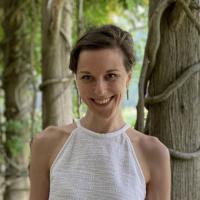
Magda Kaczmarska, MFA
Dance Artist
Camellia Latta, MLA
Program Director for Alumni Relations & Special Initiatives, GBHI at UCSF
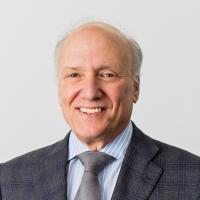
Bruce Miller, MD
Founding Director, University of California, San Francisco
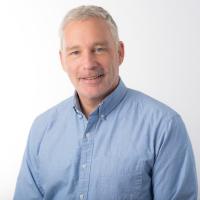
Victor Valcour, MD, PhD
Site Director, University of California, San Francisco
